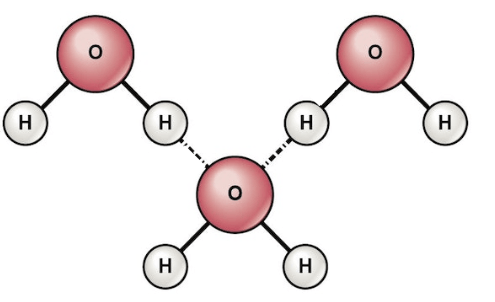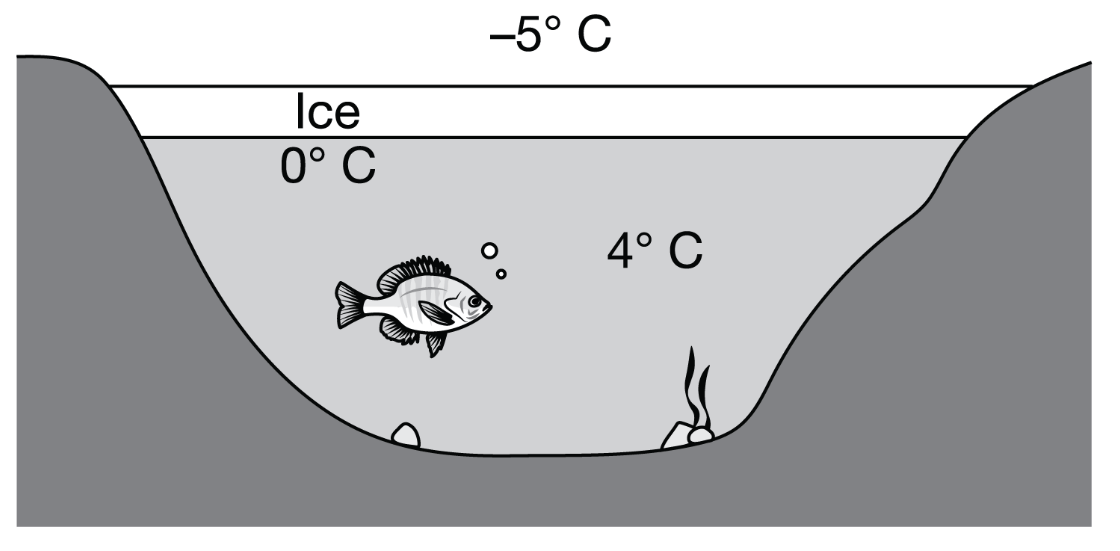What are the 6 essential elements of life?
Carbon, Hydrogen, Oxygen, Nitrogen, Phosphorus, Sulfur
Most enzymes have a name that ends in _____________.
-ase
What happens in the body when you're not active enough and you overeat carbohydrates?
The excess carbs that are not used right away will store as fat in the body.
What is the chemical formula for glucose?
C6H12O6
We know that water is a polar molecule, but what does polar mean?
One side of the molecule is slightly positive and the other end is slightly negative.
What is the function of enzymes?
They speed up chemical reactions.
Proteins are held together by ___________ bonds.
Peptide
What is the structure of a sugar molecule (ex. glucose)
A carbon ring
Identify where the hydrogen bonds and covalent bonds are in this image.
Solid line = covalent bond , Dashed line = hydrogen bond
Which enzyme would be used to break down the lactose in milk?
Lactase
Which of the following describes how monomers are bonded lengthwise in each strand of a DNA double helix?
Hydrogen bonds connect the nitrogenous bases (A, T, C, G)
What are the 3 parts of a nucleotide?
Phosphate group, pentose sugar, nitrogenous base
How does the structure of ice benefit the organisms that live in the water below?
The water molecules in ice are farther apart than those in liquid water, so the ice floats, maintaining the warmer, denser water at the lake bottom.
Enzymes are mostly made up of which macromolecule?
Proteins
Carbohydrates are held together by __________________ bonds.
Glycosidic
Why are the hydrogen bonds between nitrogen bases significant in DNA?
They're strong enough to keep the DNA molecule together, but weak enough so DNA can separate if needed.
Which property of water contributes to the process of sweating to maintain homeostasis?
High heat of vaporization allows the body to remove excess heat through a phase change of water from liquid to gas (evaporation).
Explain what enzymes are and how they help in biological processes. In your answer, describe how enzymes work, what affects their function, and why they are important for living things.
Enzymes are special proteins that help speed up chemical reactions in the body. They are important because many reactions in cells would happen too slowly without them. Enzymes can be affected by temperature and pH. If it’s too hot or too acidic, the enzyme might stop working.
Enzymes are important for things like digestion, breaking down food so our bodies can use the nutrients.
How are carbohydrates and lipids similar on a molecular level? (hint - think of the POGIL assignment)
Both of them only contain carbon, hydrogen, and oxygen.
Compare and contrast the structure and function of carbohydrates and lipids in living organisms. In your response, explain how their molecular structure relates to their role in energy storage and other biological functions.
Carbohydrates are made of sugar units. They give us quick energy because our bodies can break them down fast. Examples of carbohydrates are bread, rice, and fruit.
Lipids, like fats and oils, give us energy too, but they are used for long-term energy storage. They have more energy in them than carbohydrates because of how they are built — they have long chains of fat.
Carbohydrates are good for fast energy, while lipids are better for storing energy for later. Lipids also help build cell membranes in our bodies.